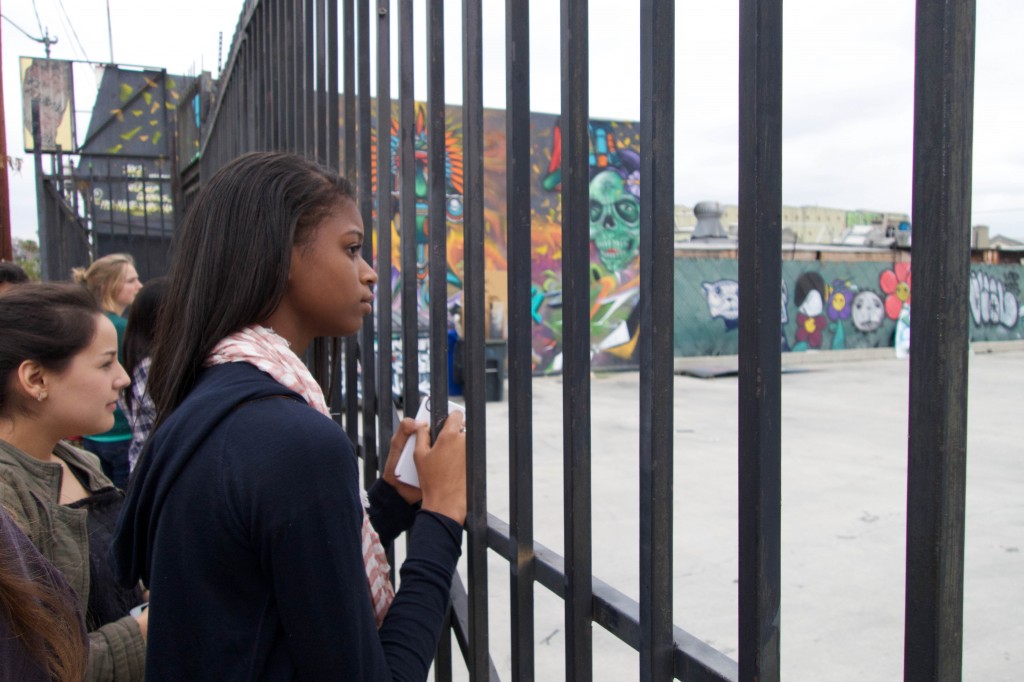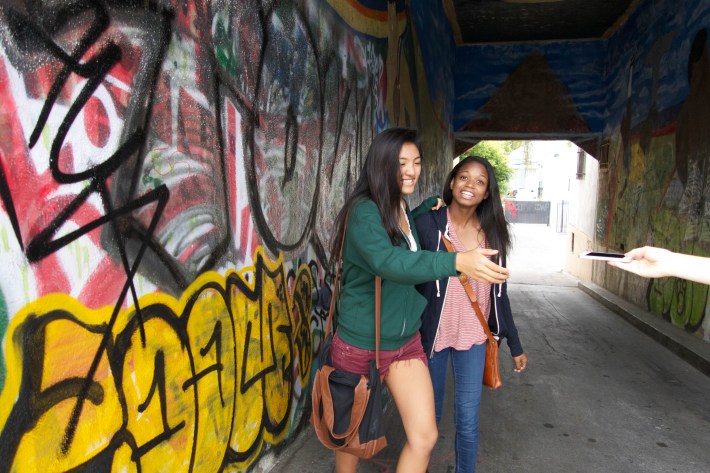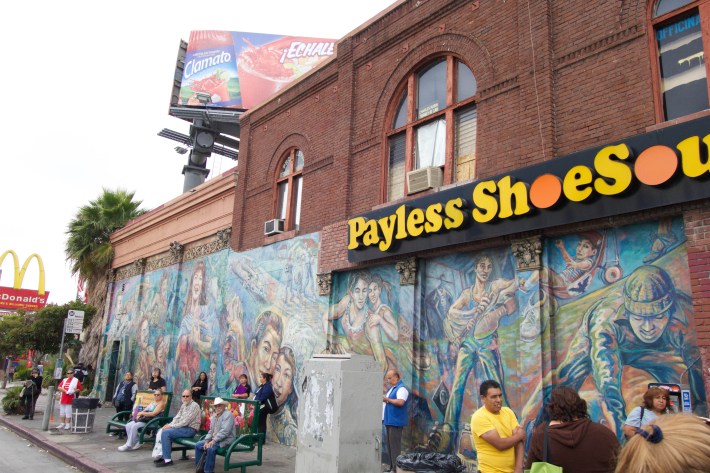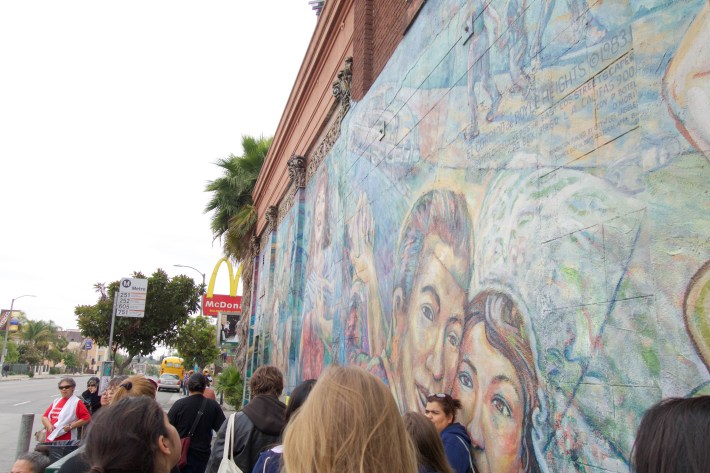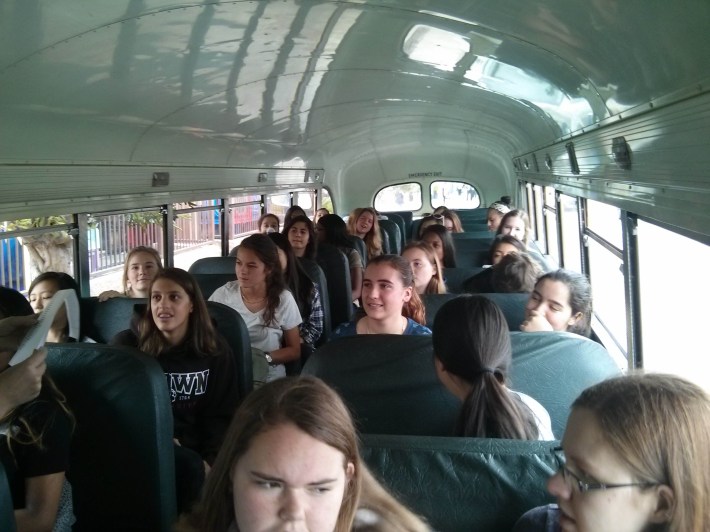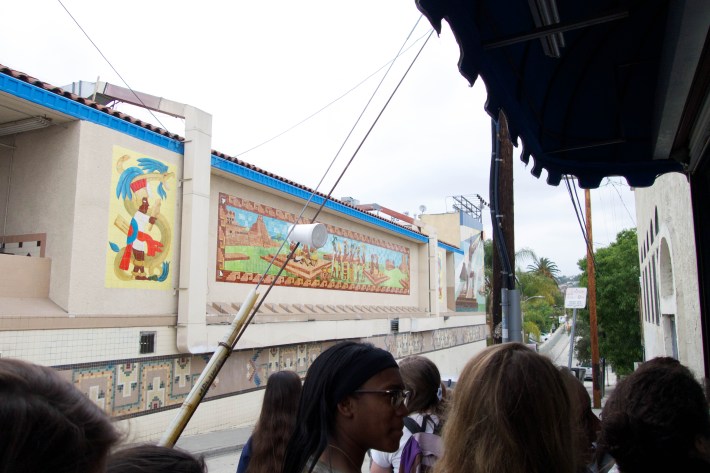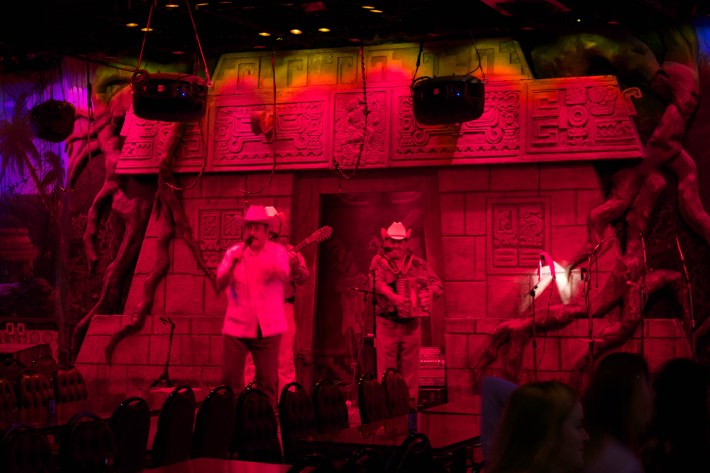What started out as a casual conversation over drinks and food turned into me leading a tour of Boyle Heights for my friend's Spanish class.
The tour gave his students, many of whom were visiting BH for the first time, the opportunity to explore the rich diversity the community has to offer.
I've had the privilege of calling BH my adoptive home since I was 7 years old. And, while I've also lived in other great cities like Compton, Watts, Inglewood, and Pico Union, I've always had that connection to BH, no matter how far away I might be.
Los Angeles is a city that forgets (or glosses over) its past at times, creating a disconnect and misconceptions of what truly makes a neighborhood a community.
And while, within historic neighborhoods like BH, that past is alive and well, unless you know its people, you may never get the full story.
So, while I may have technically been the guide, I was merely sharing what has been shared with me over the years. I've accumulated a small wealth of knowledge about the neighborhood I grew to love because others from the community have the same passion and love for it that I do.
That same passion, for better or worse, sometimes leads me to knee-jerk reactions in calling out what I perceive as gentrification and labeling any and all outsiders as "hipsters." I've seen tours of Boyle Heights and have always been curious about their intentions and level of connection because the tours are almost always led by outsiders to the community. While the participants seem to genuinely want to learn more about the neighborhood, I wonder if they are getting a full picture of what once was and how it came to be what it is now.
Historical information on when landmarks or events took place were easy enough to find through resources like the Boyle Heights Historical Society or the Los Angeles Public Library, but few can contextualize the past with the present. During the tour, I referred to BH as the Ellis Island of the West Coast because historically, BH has always had those ties to immigrants. Whether it was Irish Immigrant Andrew Boyle, who the neighborhood was named after, or my own personal immigrant experience coming to the United States as a seven-year-old and having BH be the first community I lived in (and still do).
Only someone from the neighborhood would be able to describe the significance of the demolition and rebuilding of the Aliso Village developments -- something that displaced more than two thirds of residents -- and link it to the redevelopment Wyvernwood might undergo.

BH has seen displacement more than once, which is why passions run high when it comes to issues that are still raw in the community.
Even seemingly minor tips on what kind of burritos one should try at Al & Bea's or discussions of which movies were filmed on which streets can stir up deep-seated passions.
For this event, I tried to one-up tours I've been on by having an interactive component to the tour, having participants view old pictures of landmarks through their phones as I narrated the history.
I want to continue to share the community I have tons of love for, debunking any and all stereotypes out there, but be respectful of the community that's here right now. Sharing is a mutual act that requires giving and taking, but it has to be done evenly for it to work.
(More photos below)



